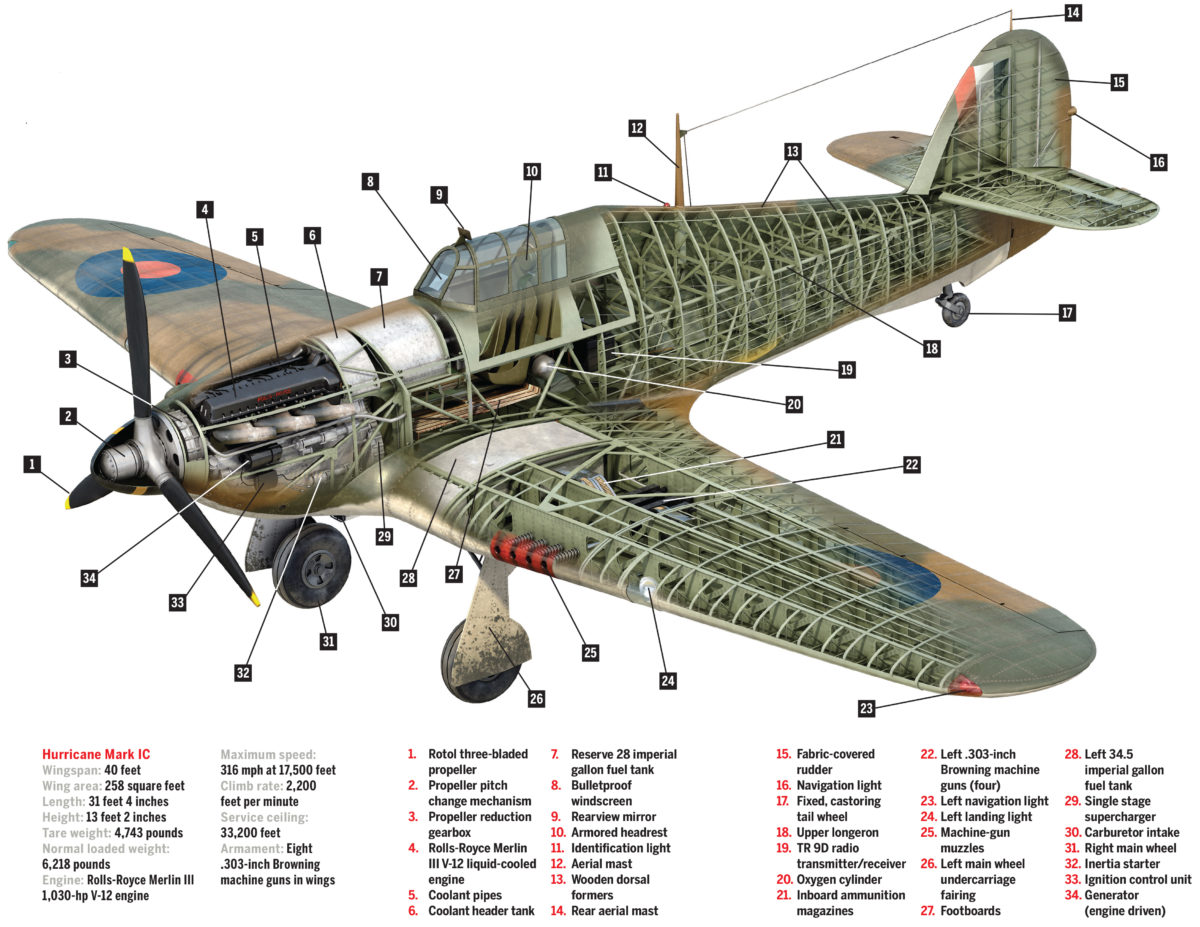Hurricane Mark IC
Wingspan: 40 feet
Wing area: 258 square feet
Length: 31 feet 4 inches
Height: 13 feet 2 inches
Tare weight: 4,743 pounds
Normal loaded weight: 6,218 pounds
Engine: Rolls-Royce Merlin III 1,030-hp V-12 engine
Designed by British aeronautical engineer Sydney Camm as a monoplane successor to his Hawker Fury biplane fighter, the Hawker Hurricane was initially pursued as a private venture, as the prewar Air Ministry was slow to approve the project. Thus subject to budget considerations, the prototype’s tubular metal airframe included wooden components and a fabric skin when it first flew on Nov. 6, 1935. Entering service in December 1937, it lacked the sophistication and development potential of its future stablemate, the Supermarine Spitfire, but was much easier to mass produce and repair. Consequently, when the Battle of Britain broke out in 1940, the Royal Air Force was flying twice as many Hurricanes as Spitfires. Although outperformed by the Messerschmitt Me 109E in all respects except maneuverability, the Hurricane was well able to face everything else the Luftwaffe flew, from bombers to the Messerschmitt Me 110s intended to escort them.
Of the 2,741 aerial victories claimed by RAF Fighter Command during the Battle of Britain, 55 percent were credited to Hurricanes, 42 percent to Spitfires. The most successful unit, No. 303 (Polish) Squadron, flew Hurricanes. Its Czech member, Josef František, claimed 17 victories before his tragic death in a crash. The RAF’s leading ace, South African Marmaduke Thomas St. John Pattle, scored 35 of his 50-odd victories in the nimble monoplane.
More than 14,500 Hurricanes took to the air by war’s end. The type participated in every British campaign of the war, also serving as a carrier fighter, night intruder, attack plane and antitank aircraft. Hurricanes also saw use in Belgium, Finland and the Soviet Union. Not a bad record for the product of a transitional structural compromise. MH
This article was published in the September 2020 issue of Military History.





